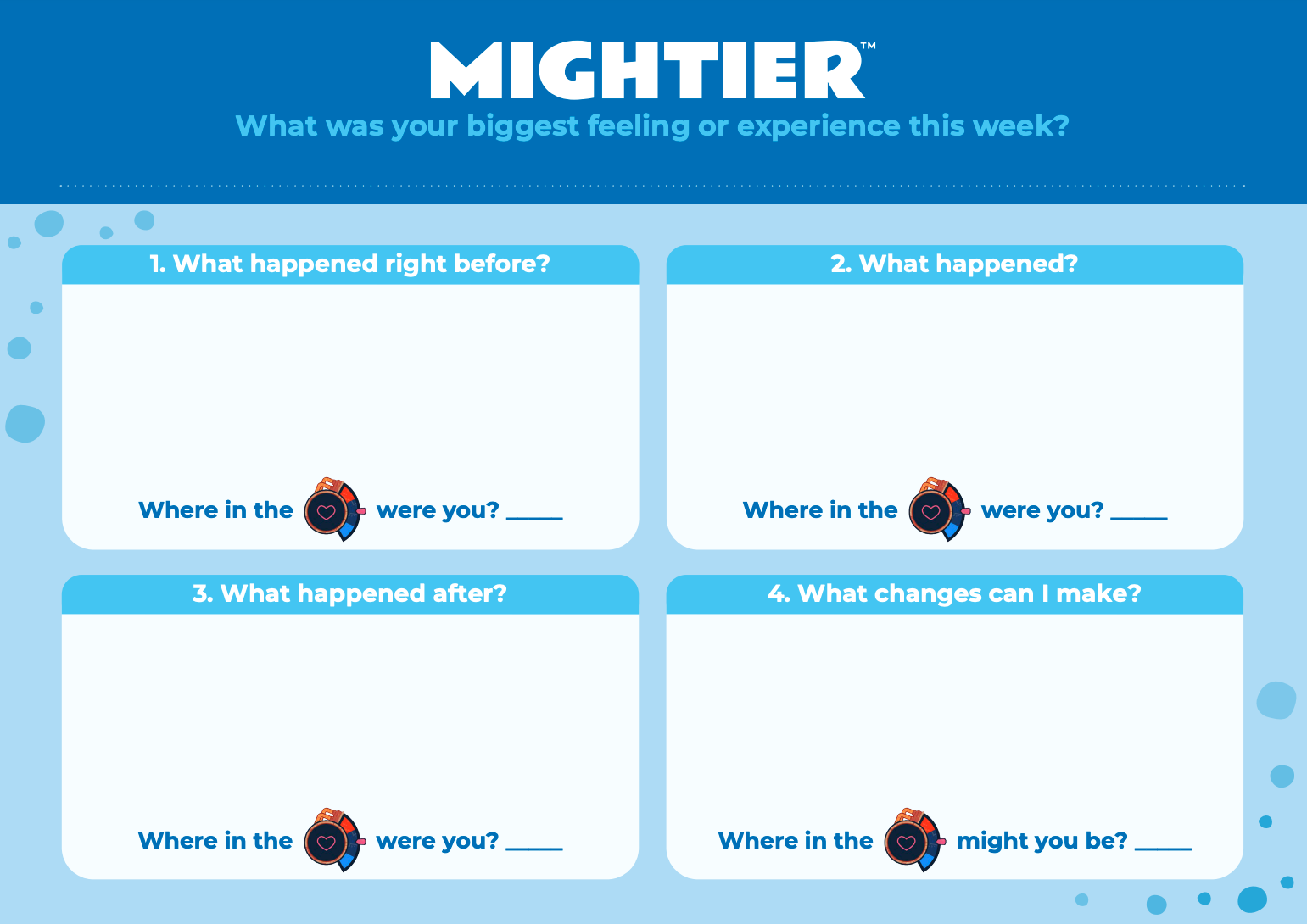- 10 to 15 minutes
- In person
- Teletherapy

Overview
Using behavior chaining, this activity will help clients reflect on an experience and discuss changes in behavior for future experiences by using familiar Mightier language.
Time in Mightier program
Weeks 6+
Therapeutic Goals
- Develop emotional awareness
- Increase emotional vocabulary
- Practice self-reflection
- Practice positive self-talk and growth mindset
- Practice communication and social skills
- Support client’s understanding and enjoyment of Mightier
Documentation Suggestion
Client and clinician engaged in a behavior chaining intervention which helped the client reflect on an experience and discuss changes in behavior for future experiences using the Mightier biofeedback tool’s language. This intervention helped the client to develop emotional awareness, increase emotional vocabulary, and practice communication and social skills.
Materials needed

Paper

Writing utensils
Step-by-step instructions
- Have your client reflect and share their biggest feeling or experience this week. (This activity can also be used if the client brings up an experience that is particularly difficult for them to understand or to parse through.)
- Have the client fold their paper into four square-like quadrants or use the optional worksheet (link to download below).
- In the second square, have your client draw or write what happened. Ask questions along the way regarding the experience including what happened, how they were feeling, who the experience involved, and other questions you find relevant.
- Have the client rate what section of the Gizmo they were in when they were in the experience (red, grey, or blue). Have them label this by using colors or written words. Ask questions as to what they noticed about their body and their feelings that made them believe they were in this section of the Gizmo.
- Have the client use the first square on the piece of paper to draw or write what happened right before the experience in the second square (the trigger for the behavior). Ask the client what they were thinking, feeling, and experiencing during this time. Ask the client again to identify what section of the Gizmo they were in for this experience and ask questions about what they notice.
- Have the client go to the third square and draw or write what happened after the experience in the second square (the consequence of the behavior). Ask the client what happened and what they were experiencing in terms of thoughts, feelings, and behaviors during this time. Ask the client again to identify what section of the Gizmo they were in for this experience and ask questions about what they notice.
- Celebrate the client’s reflection and process during this time.
- Work with the client to brainstorm different options for the second square (the behavior) that may change the consequence. Have the client draw or write potential changes to behavior or skills they could engage in in the fourth square. (i.e. use a calming skill, ask for help, leave the situation, etc.). The client may have more than one potential change for square four. If that is the case, then have the client use the backside of the paper or another page.
- Reflect on changes in feelings and behavior if these changes were made. Help the client to plan for potential ways to utilize skills or behaviors the next time a similar experience is to come up.
